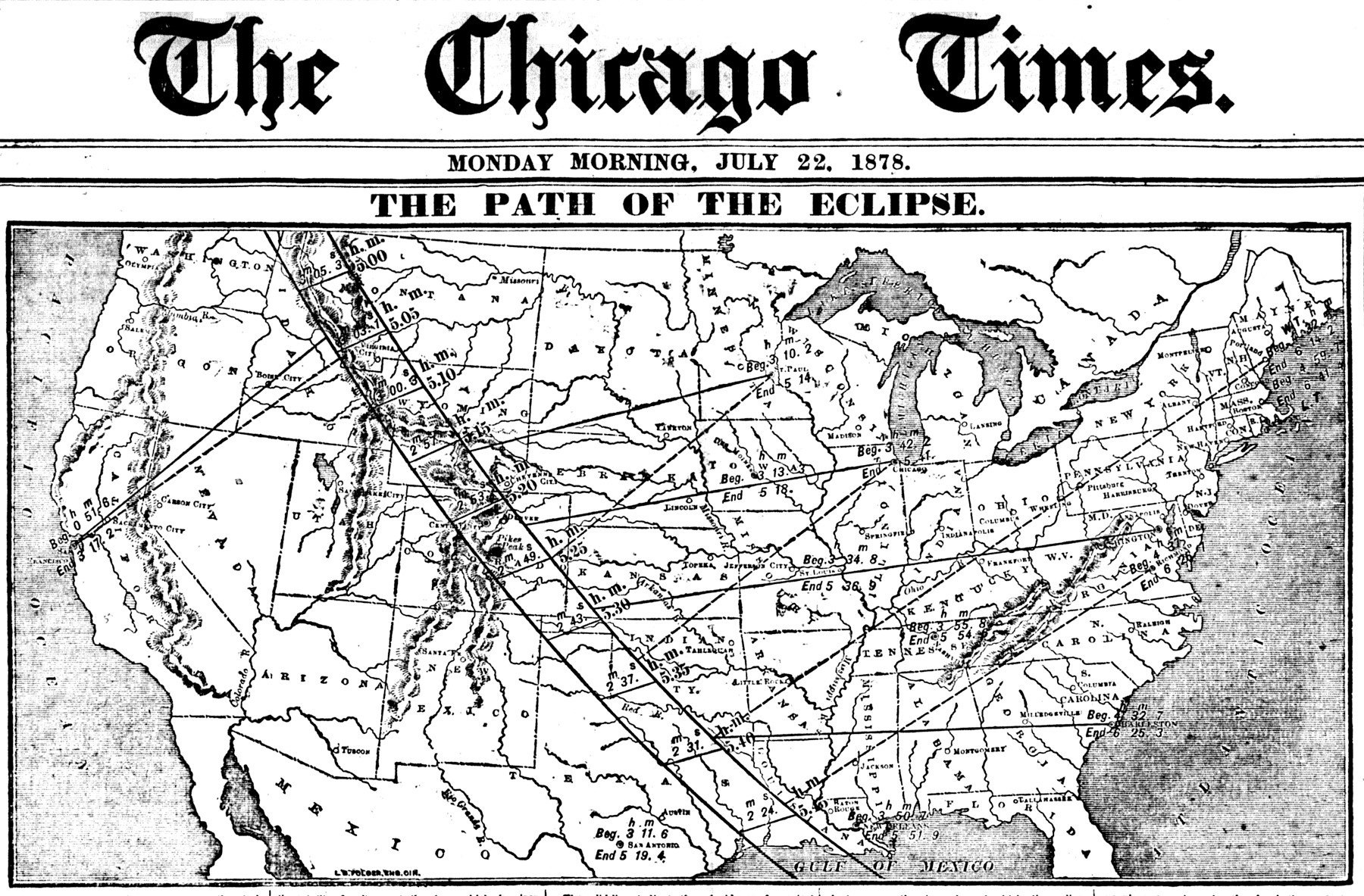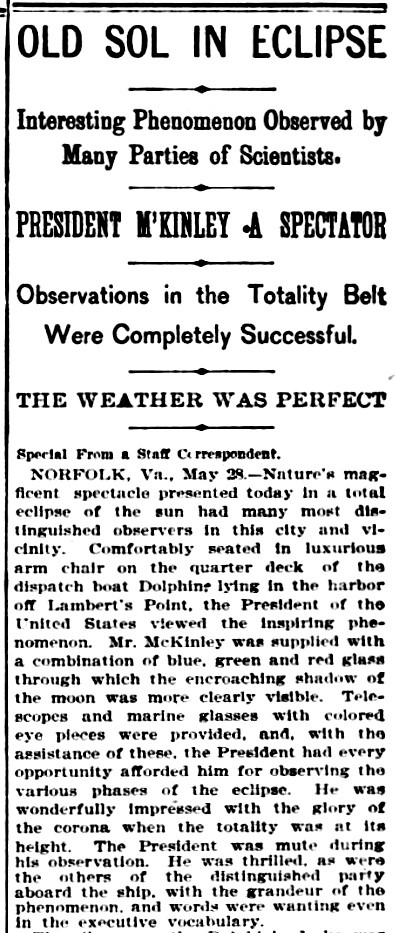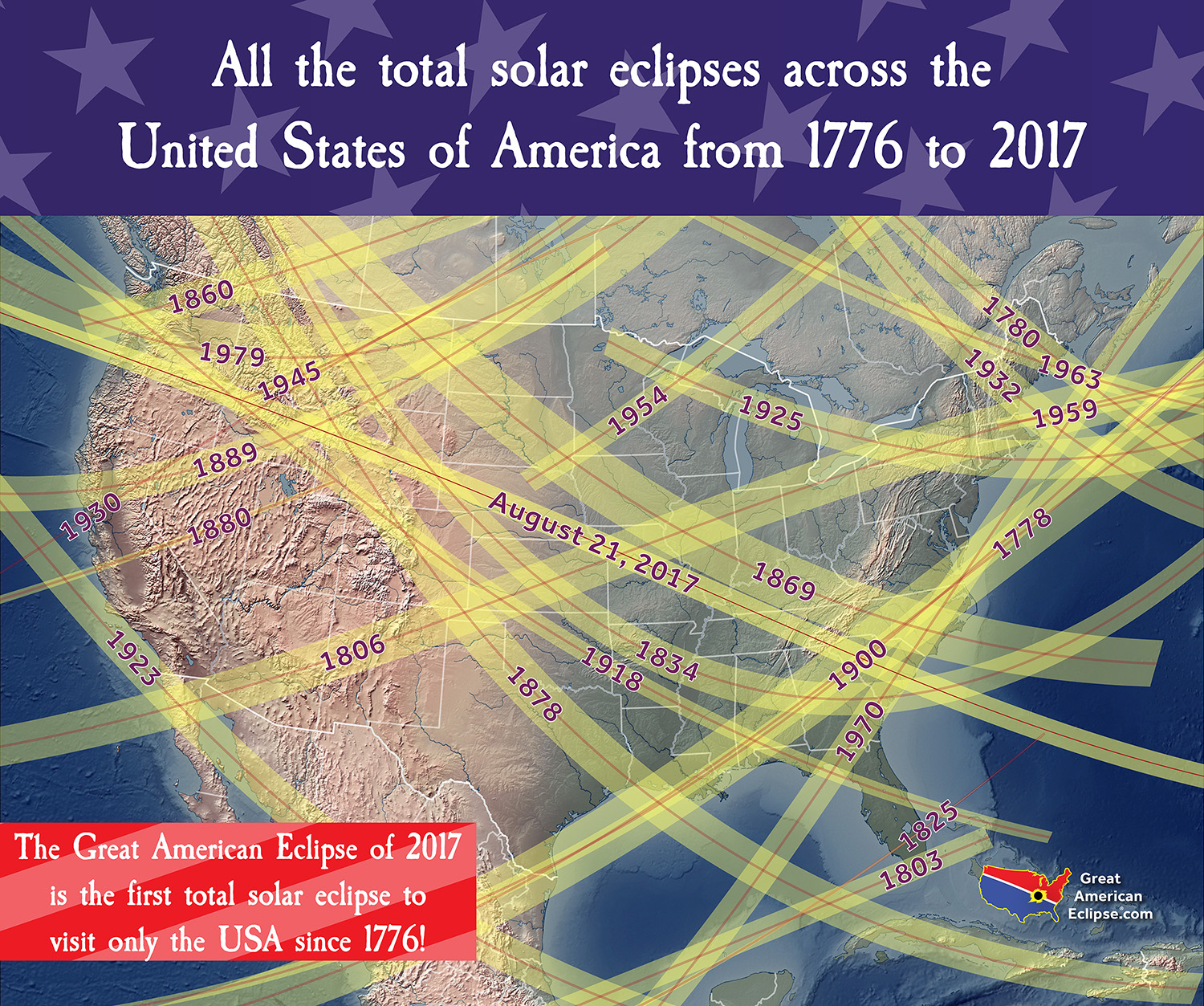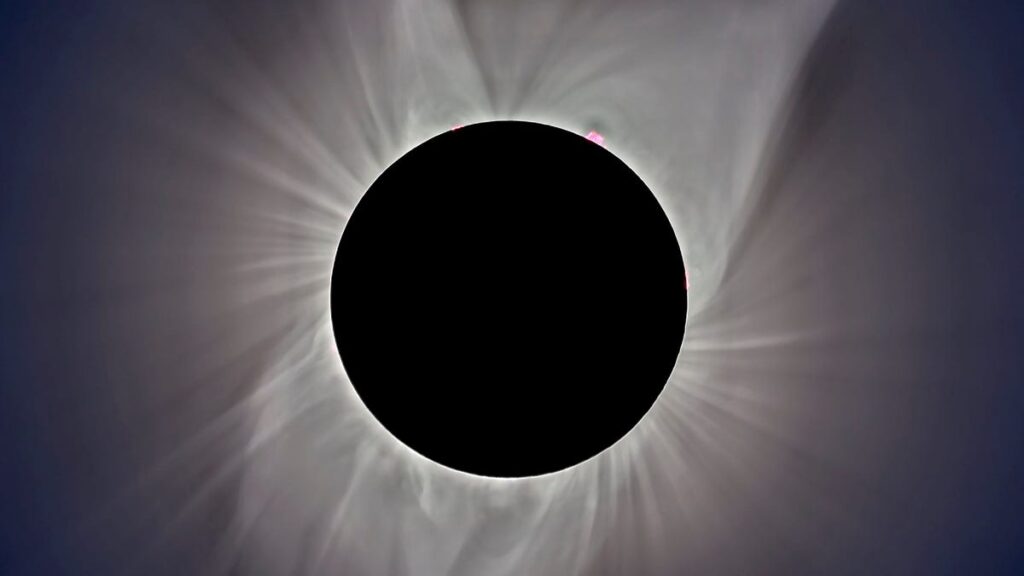Portal to the Past: Make Your Own Eclipse History Exhibit

by guest blogger David Baron, author of American Eclipse: A Nation’s Epic Race to Catch the Shadow of the Moon and Win the Glory of the World due to be republished in February 2024 as a new and updated paperback edition.

A solar eclipse is not just an alignment of heavenly bodies; it’s an alignment of people. Watching the moon blot out the sun reminds us of our shared humanity on this small planet. The sense of awe connects us, one with another. It can also connect the present with the past.
Most anyone at any eclipse has wondered how people generations ago responded to the same celestial spectacle. Today, thanks to the internet and digitized archives, it’s easy to quench that curiosity and turn the total eclipse of April 8, 2024, into a teachable moment for local history. I’m here to provide some tips.

I come to this topic with more than a little experience. I spent the better part of a decade researching and writing a book called American Eclipse, which tells the story of the total solar eclipse of July 29, 1878. On that day, the moon’s shadow raced down the spine of the Rocky Mountains and darkened skies from Montana Territory to Texas. My book focuses on three scientists—inventor Thomas Edison, planet hunter James Craig Watson, and Vassar College astronomer Maria Mitchell—who traveled to the Wild West to experience this rare moment for the study of the cosmos.
But it wasn’t just the professionals who thrilled at the sight of the 1878 eclipse. In Wyoming, cowboys and railroad workers cheered when the day went dark and the sun became a blazing halo in the sky. Denver grew so crowded with eclipse-chasing tourists that the city ran out of hotel rooms. When the sun disappeared over Texas, many fell to their knees, sure that Judgment Day was at hand.
In the almost 250 years since our nation declared its independence, two dozen total solar eclipses have touched the territory now encompassed by the contiguous United States, and several more have crossed Alaska and Hawaii. On those occasions in American history, how did residents of your region react? Did they celebrate or pray? What did they use for eclipse glasses? Did schools and businesses close for the day? How did newspapers cover the events?

With a little effort, you can answer these questions and create a history exhibit for your library or school. You might even make this a class assignment. Here are steps to follow:
1) Choose a total eclipse that passed over—or near—your community. Consult the map and table (at the bottom of this post) listing all total eclipses that have crossed the United States since 1776. In the table, I have indicated dates for the eclipses and the principal states where they were observable. (Of course, those states may not yet have existed at the time.) For each eclipse, you’ll also find a hyperlink to an interactive map that shows precisely where the path of totality fell; that is, where the eclipse was seen as a total eclipse. If your community was near but outside the path, then it experienced a deep partial eclipse on that day.
[Tip: Your task will be easier if you choose an eclipse after 1850, when newspapers became more common. You might also choose an eclipse prior to 1928, as anything published before that year in the United States is in the public domain and can be reproduced without concern for copyright.]
2) Search for newspaper articles about the eclipse. A good place to start is the Library of Congress’s free database of historical newspapers, Chronicling America. Select “Advanced Search,” enter “eclipse” in the search box, and choose a date range from perhaps a week before the eclipse to a week after. You might limit your search to newspapers from your city or state. What did you turn up? Scientific news? Personal reports? Editorial cartoons or advertising related to the eclipse?
Don’t stop there. The Library of Congress’s digital news site is far from exhaustive. Your state may have its own free archive of old newspapers. (Check here.) And there are many paid sites worth checking. These may be accessible through your library. If not, you might subscribe on your own. Try the following:
- America’s Historical Newspapers
- GenealogyBank.com
- NewspaperArchive.com
- Newspapers.com
- Nineteenth Century U.S. Newspapers
- ProQuest Historical Newspapers
3) What else was going on in your community? To add a sense of time and place to your exhibit, look for articles that reveal what life was like when the eclipse occurred. What were the hot political issues? How much did a loaf of bread cost? What music were people listening to? Who was president?

4) Look for letters, diaries, photographs, artwork. For extra credit, see if you can find unpublished material about the eclipse. Check with your library or historical society to see if they have, in their manuscript collections, anything from the date of the eclipse. Private writings often provide the most interesting descriptions. One of the astronomers in Colorado for the eclipse of 1878 wrote home to his family, “I once experienced an earthquake, and I think this and a total eclipse of the sun are two things that it is no use trying to describe; you must feel or see for yourself.” Historical research is a treasure hunt; you never know what you’ll turn up.
A history exhibit (or website) is an effective way to broaden your audience for eclipse education. It’s yet one more way that the 2024 eclipse can foster human connection.
TOTAL ECLIPSES IN THE UNITED STATES SINCE 1776

| Date | States in the Path of the Total Eclipse |
| June 24, 1778 | Louisiana, Mississippi, Alabama, Georgia, South Carolina, North Carolina, Virginia. |
| Oct. 27, 1780 | Maine. |
| Feb. 21, 1803 | Florida. |
| June 16, 1806 | Arizona, New Mexico, Texas, Colorado, Oklahoma, Kansas, Missouri, Illinois, Indiana, Michigan, Ohio, Pennsylvania, New York, Connecticut, Massachusetts, Vermont, New Hampshire, Rhode Island. |
| Dec. 9, 1825 | Florida. |
| Nov. 30, 1834 | Montana, Wyoming, Nebraska, Kansas, Oklahoma, Arkansas, Mississippi, Alabama, Georgia, South Carolina. |
| Aug. 7, 1850 | Hawaii. |
| July 18, 1860 | Washington. |
| Aug. 7, 1869 | Alaska, Montana, North Dakota, South Dakota, Iowa, Illinois, Indiana, Kentucky, Virginia, Tennessee, North Carolina. |
| July 29, 1878 | Alaska, Idaho, Montana, Wyoming, Colorado, Oklahoma, Texas, Louisiana. |
| Jan. 11, 1880 | California, Nevada, Utah. |
| Jan. 1, 1889 | California, Nevada, Idaho, Wyoming, Montana, North Dakota. |
| May 28, 1900 | Texas, Louisiana, Mississippi, Alabama, Georgia, South Carolina, North Carolina, Virginia. |
| June 8, 1918 | Washington, Oregon, Idaho, Wyoming, Colorado, Kansas, Oklahoma, Arkansas, Mississippi, Alabama, Florida. |
| Sept. 10, 1923 | California. |
| Jan. 24, 1925 | Minnesota, Wisconsin, Michigan, New York, Pennsylvania, New Jersey, Connecticut, Rhode Island. |
| April 28, 1930 | California, Nevada, Idaho, Montana. |
| Aug. 31, 1932 | Vermont, New Hampshire, Maine, Massachusetts. |
| Feb. 4, 1943 | Alaska. |
| July 9, 1945 | Idaho, Montana. |
| June 30, 1954 | Nebraska, South Dakota, Minnesota, Wisconsin, Michigan. |
| Oct. 2, 1959 | New Hampshire, Massachusetts. |
| July 20, 1963 | Alaska, Maine. |
| March 7, 1970 | Florida, Georgia, South Carolina, North Carolina, Virginia, Massachusetts. |
| July 10, 1972 | Alaska. |
| Feb. 26, 1979 | Washington, Oregon, Idaho, Montana, North Dakota. |
| July 11, 1991 | Hawaii. |
| Aug. 21, 2017 | Oregon, Idaho, Wyoming, Nebraska, Kansas, Missouri, Illinois, Kentucky, Tennessee North Carolina, Georgia, South Carolina. |





Responses